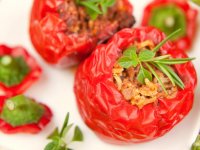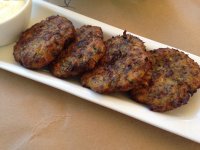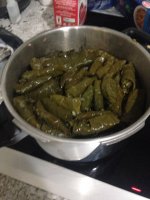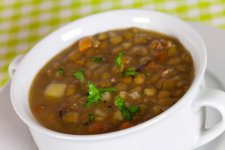Menu
Install the app
How to install the app on iOS
Follow along with the video below to see how to install our site as a web app on your home screen.
Note: This feature may not be available in some browsers.
You are using an out of date browser. It may not display this or other websites correctly.
You should upgrade or use an alternative browser.
You should upgrade or use an alternative browser.
Greek Food, Cooking and Recipe Community
What are your favorite lenten recipes?
- Thread starter mastichas09
- Start date
1 - 4 of 4 Posts
My favorite Lenten Greek food is Yemistes (stuffed tomatoes) :
https://www.greekboston.com/food/vegetables/vegan-stuffed-tomatoes/

https://www.greekboston.com/food/vegetables/vegan-stuffed-tomatoes/

kosta_karapinotis
Active member
k_tsoukalas
Administrator
1 - 4 of 4 Posts
JOIN THE DISCUSSION AND READ OTHER GREEK INFO:
Current food trends in Greece?
- dpappas87
- Greek Food Forum
- Replies: 0
I understand that Greece is just like other countries where there might be food trends, new dishes, etc to enjoy.
I'm looking to understand more about the latest trends that are currently shaping it. I'm particularly interested in how traditional Greek recipes are being reimagined by modern chefs, how regional variations are gaining popularity, or if there's a rise in any particular ingredients or cooking methods.
Is anyone here keeping tabs on contemporary movements in Greek food? Maybe you've dined at a restaurant that surprised you with a modern twist on a Greek classic, or you've come across new food blogs with innovative recipes.
The cuisine of Greece is as much about the traditional recipes we all love as it is the trends and the way the cuisine moves forward!
I'm looking to understand more about the latest trends that are currently shaping it. I'm particularly interested in how traditional Greek recipes are being reimagined by modern chefs, how regional variations are gaining popularity, or if there's a rise in any particular ingredients or cooking methods.
Is anyone here keeping tabs on contemporary movements in Greek food? Maybe you've dined at a restaurant that surprised you with a modern twist on a Greek classic, or you've come across new food blogs with innovative recipes.
The cuisine of Greece is as much about the traditional recipes we all love as it is the trends and the way the cuisine moves forward!
Can you make your own rusks?
- redsoxdw_
- Greek Food Forum
- Replies: 0
I love Cretan Dakos!
There's something about the combination of the crunchy rusk soaked with the juice of ripe tomatoes, topped with fresh cheese and olive oil, that has me hooked!
However, given that I live in an area where it's challenging to find authentic Cretan rusks, I'm contemplating on whether I can bake my own at home. I'm curious if anyone here has attempted to make rusks suitable for dakos from scratch.
I know I can order then online. I tried this, and they didn't survive the shipping too well.
There's something about the combination of the crunchy rusk soaked with the juice of ripe tomatoes, topped with fresh cheese and olive oil, that has me hooked!
However, given that I live in an area where it's challenging to find authentic Cretan rusks, I'm contemplating on whether I can bake my own at home. I'm curious if anyone here has attempted to make rusks suitable for dakos from scratch.
I know I can order then online. I tried this, and they didn't survive the shipping too well.
Stuffed grape leaves - how much filling?
- voula_slat
- Greek Food Forum
- Replies: 1
I haven't made stuffed grape leaves in a while and I have some questions.
First of all, I am having a hard time judging how much filling to put in each leaf? I have a friend who helped me and tried to explain. She'd put a teaspoon of filling in the leaf, then add or subtract more after looking at it. She's quick rolling, and I have no idea how she knows how much filling.
And she really couldn't explain it - just said that you have to look at it and it's by feel. It sounds like my yiayia and she's younger than me! I told her that and she just shrugged. She tried to talk me through it as we were rolling together but it seemed so random to me.
First of all, I am having a hard time judging how much filling to put in each leaf? I have a friend who helped me and tried to explain. She'd put a teaspoon of filling in the leaf, then add or subtract more after looking at it. She's quick rolling, and I have no idea how she knows how much filling.
And she really couldn't explain it - just said that you have to look at it and it's by feel. It sounds like my yiayia and she's younger than me! I told her that and she just shrugged. She tried to talk me through it as we were rolling together but it seemed so random to me.
Greek methods of food preservation?
- d_kakavouli
- Greek Food Forum
- Replies: 1
I remember my family doing some things to preserve food as I was growing up but we got away from them. The thing is, some of the options were actually delicious! My yiayia made sun-dried tomatoes, spoon sweets, her own tomato paste, etc. It was one of the things that made her food delicious.
I am trying to figure out what she did! I am curious if anyone knows anything about the following:
- Traditional Techniques: I know the ancient Greeks did a lot of preserving and some of the methods translate to modern?
- Modern Adaptations to Old Techniques: Maybe to make the process easier?
- Local Variations: Are there different regional things?
I am trying to figure out what she did! I am curious if anyone knows anything about the following:
- Traditional Techniques: I know the ancient Greeks did a lot of preserving and some of the methods translate to modern?
- Modern Adaptations to Old Techniques: Maybe to make the process easier?
- Local Variations: Are there different regional things?
Greek Halva Recipe to Enjoy During Lent?
- d_kakavouli
- Greek Food Forum
- Replies: 2
I love Halva year round but I often see it a lot during Lent. My recipe doesn't seem Lent friendly to me. Any ideas on how I can adapt it?
Ingredients:
Ingredients:
- 1 cup semolina
- 1 cup granulated sugar
- 1/2 cup unsalted butter
- 2 cups water
- 1/4 teaspoon ground cinnamon
- 1/4 cup chopped almonds or walnuts (optional)
- 1/4 cup raisins (optional)
- In a medium-sized saucepan, melt the butter over medium heat.
- Add the semolina to the melted butter and stir continuously for about 5-7 minutes, or until the semolina turns golden brown and begins to emit a nutty aroma.
- While stirring the semolina mixture, gradually add the sugar and continue to cook for another 2-3 minutes until the sugar is fully incorporated.
- Slowly pour in the water, stirring constantly to avoid lumps from forming. Be careful as the mixture may splatter.
- Reduce the heat to low and continue stirring the mixture until it thickens to a porridge-like consistency, about 5-7 minutes.
- Stir in the ground cinnamon and optional chopped nuts and raisins, if using.
- Remove the saucepan from the heat and let the halva rest for a few minutes to thicken further.
- Serve the halva warm or at room temperature, either as a dessert or a sweet breakfast treat.
Sign up for a free account and share your thoughts, photos, questions about Greek food, travel and culture!
WorldwideGreeks.com is a free online forum community where people can discuss Greek food, travel, traditions, history and mythology.
Join Worldwide Greeks here!
Join Worldwide Greeks here!
JOIN COMMUNITY FOR FREE
LOGIN TO YOUR ACCOUNT





